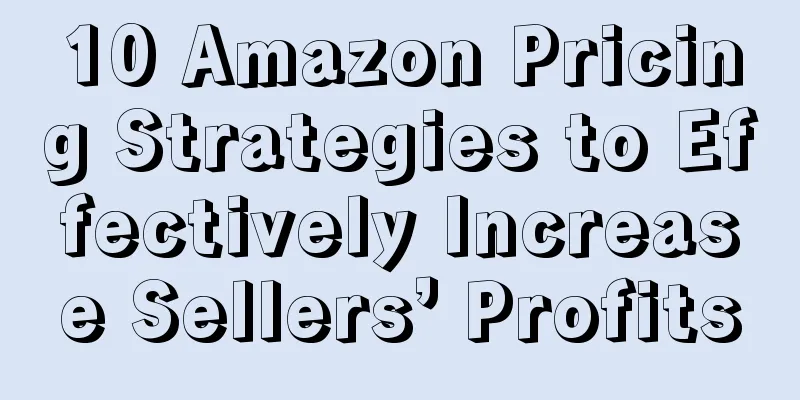The cross-border industry has undergone a major reshuffle under the epidemic, and these products will see a reversal in sales!

|
In 2020, it would be no exaggeration to say that the cross-border e-commerce industry has undergone a reshuffle. With the outbreak of the epidemic abroad, those forward-looking big sellers put epidemic prevention products such as masks and forehead thermometers on the shelves early, opened up supply channels, and prepared all necessary certifications. The result was naturally that they made a lot of money. However, the current situation of most small and medium-sized sellers is that by the time they discover this business opportunity, it is already too late. The supply and logistics channels have already been seized by sellers who entered the market earlier, and certification is even more of a difficult hurdle to overcome. Not only that, but they also have to endure tremendous psychological pressure, worrying about becoming the unlucky receiver after entering the market. Therefore, most small and medium-sized sellers now dare not rashly enter the epidemic prevention product category, but the products they already have are affected, sales have plummeted, and they are even facing the dilemma of store closure.
So how can we find a way out of this dilemma? The key is to discover products with high demand hidden behind anti-epidemic products. According to a list released by Stackline, a well-known foreign research organization, in March 2020, the 100 categories with the fastest growth and the largest decline in online transactions in the United States compared with last year, among which the sales of disposable gloves soared by 670%, and the sales of bread machines soared by 652%! The fastest growing items include (TOP 10) : disposable gloves, bread machines, cough medicine, soups, dry cereals, packaged foods, assorted fruits and vegetables, dumbbells, dairy products, and dishwashers. The items with the fastest decline include (TOP 10) : suitcases, briefcases, cameras, men's swimsuits, bridal wear, men's formal suits, women's swimsuits, sun protection clothing, sports shoes (men), and sports bags.
The above are the products whose sales have skyrocketed since the outbreak of the epidemic, in addition to epidemic prevention products. However, for small and medium-sized sellers, what they want to know more is, with limited supply chain resources, how to combine their own categories and advantages to explore such potential products? First, we need to clarify whether these products have something in common. The answer is yes. Due to the surge in demand for necessities abroad, in order to concentrate transportation capacity, Amazon previously closed the FBA warehousing channel for non-essential goods. Although it will be restored after April 5, most sellers of non-essential goods are still unable to create shipping plans. Since then, European sites have also restricted FBA warehousing. Therefore, most sellers will mainly ship the goods themselves. And because it is a special period, the purchasing needs of buyers are different from before, which also means that products that usually perform generally and have few reviews may have new opportunities this time. Secondly, due to the concentrated outbreak of demand, the volume of product orders has skyrocketed compared to the past, and out-of-stock conditions may occur, and the search volume for keywords will also increase rapidly. To sum up:
1. Products are mainly fbm 2. There are usually very few reviews of the product itself Then we can use product selection tools such as SellerSprite or JS to set relevant data based on the above points and screen out products with potential. This epidemic has been a great test for all sellers, even veteran sellers with many years of experience are no exception. Products that were once hot-selling may no longer be hot-selling, while products that did not sell well in the past may see a sales reversal. But this may be an opportunity for new sellers who have just entered the market. As the saying goes, a small ship is easier to turn around. If they can adjust their strategies in time and follow the trend in this industry reshuffle, they may be able to make a comeback after the epidemic. Source: Seller Growth Academy |
<<: Rankings soared 5802%! Just now, these products are selling like hotcakes on AMZ...
>>: Amazon has a new policy! It will stop accepting new customer orders!
Recommend
Amazon US encourages marijuana legalization! And allows hiring marijuana smokers!
Amazon is allowing employees who smoke marijuana t...
What is Meesho? Meesho Review
Meesho is an Indian social media e-commerce platfo...
What is RAVPower? RAVPower Review
RAVPower is one of the six brands under Zebao Sunv...
Mexico's online payments market is growing exponentially and is expected to reach $21.8 billion in 2024
According to Statista, more than two-thirds of Mex...
New function of refunding orders is launched! Amazon protects CSBA sellers
Amazon issued a new announcement in the past two d...
What is Lotte Korea? Lotte Korea Review
Lotte Group (English: Lotte Co., Ltd., Japanese: ロ...
Big news! New requirements for Amazon listings are now available. Compliance must be completed before publishing!
Normal, once there is data abnormality, such as s...
Walmart and Target are trying every way to grab Amazon traffic during Prime Days!
AMZ23 has learned that both Walmart and Target are...
What is Minter.io? Minter.io Review
Minter.io is a very powerful Instagram analysis to...
What is Xiamen Hexin? Xiamen Hexin Review
Xiamen Hexin E-commerce Co., Ltd. (formerly known ...
To help you ride the wave during the peak season, have you received these benefits?
A year's plan starts with winter, and a big sa...
What is PatPat? PatPat Review
PatPat is a mobile maternal and infant export e-co...
What is Argos? Argos Review
Argos is a large-scale department store retail cha...
Amazon and Walmart compete with each other not only on price
Competition between giants will cause greater fluc...
Amazon recruits another 125,000 workers! Hourly wage increased to $18!
It is learned that Amazon recently plans to recrui...









